Japanese Culture
- All Categories
- Cruise
- Customer Message
- flower
- Hokuriku tourisum
- Ibaraki tourism
- Japanese Culture
- Japanese foods and drinks
- Japanese lesson
- Kanagawa tourism
- Kyoto tourism
- LGBT
- Messe
- Mie
- Nagano tourism
- Nature in Japan
- News
- Nihongo
- Osaka Accommodation
- Otaku
- Ryokan
- Saitama tourism
- Shikoku tourisum
- Shizuoka tourism
- Tohoku tourism
- Tokyo tourism
- Topics
- Tottori
- Transportation
- Travel Information
- Travel Tips

A customer of mine who had traveled to Japan asked me why the Japanese don’t speak English.
He probably thinks the Japanese are a superior people with a high-quality education.
I am very flattered by this misunderstanding. But unfortunately his perception and the reality are different.
It is estimated that only around 10% of Japanese people speak English.
In larger cities such as Tokyo and Osaka, the proportion is much higher, but in rural areas, English-speaking Japanese are very rare.
While some people can communicate with a translation app, others refuse to do so.
Japanese learn English in junior and senior high school.
Some children go to an English tutoring school when they are in elementary school.
However, many Japanese do not speak English.
So my client asked me why the Japanese don’t speak English.
Japanese people only speak Japanese on a daily basis and therefore do not feel obliged .
There is no situation where a foreign language has to be spoken.
I think that’s the reason why the Japanese don’t speak English.
If there were books that could only be read in English and movies that could only be watched in English, the Japanese would speak English better.
But conveniently, various things of interest to Japanese people have been translated into Japanese.
This may be inconvenient for foreign travelers.
Even in hospitals, English is often not spoken.
Doctors read medical articles in English. They understand English, but many cannot communicate well in English.
It is therefore advisable to check whether interpreting services are included in the travel insurance.
It is advisable to learn basic Japanese before entering Japan.
In particular, it is useful to learn the Japanese words you will need in an emergency.
Japan is a country prone to natural disasters. Initial information will naturally be provided in Japanese.
Obtaining information in English takes more time.
Many Japanese do not speak English, so it depends on luck whether someone can translate for you.
My small travel agency can also offer simple Japanese courses before the trip via ZOOM or Skype.
In addition, the concierge service provides advice in emergencies.

I received a happy message from my client.
Thank you!
These clients are very interested in Japanese art.
I am very happy that they enjoyed both new and old Japanese culture.
The nice photos were taken by the customer.
・・・・・
Wir sind zurück von unserer wunderbaren Japanreise, erfüllt von vielen Eindrücken und Erlebnissen. Alles hat super geklappt: das haben wir auch Ihnen zu verdanken!
Das staatliche Gästehaus in Kyoto war ein sehr wertvoller Tipp von Ihnen: wir haben so gestaunt ob all den Handwerkskünsten und Perfektion der Gestaltung. Die Teezeremonie war ebenso ein sehr schönes und beeindruckendes Erlebnis.
Auch mit dem Mieten des Autos gab es keinerlei Probleme und wir durften Fujisan bei strahlendem Wetter erleben! Naoshima war dann eines unserer Highlights und es war toll, die verschiedenen Museen und Kunstwerke mit dem Fahrrad zu erleben.
Ich danke Ihnen von Herzen für alles, was Sie für mich und uns getan haben. Es war eine Reise, die uns unvergessliche Erinnerungen beschert hat.
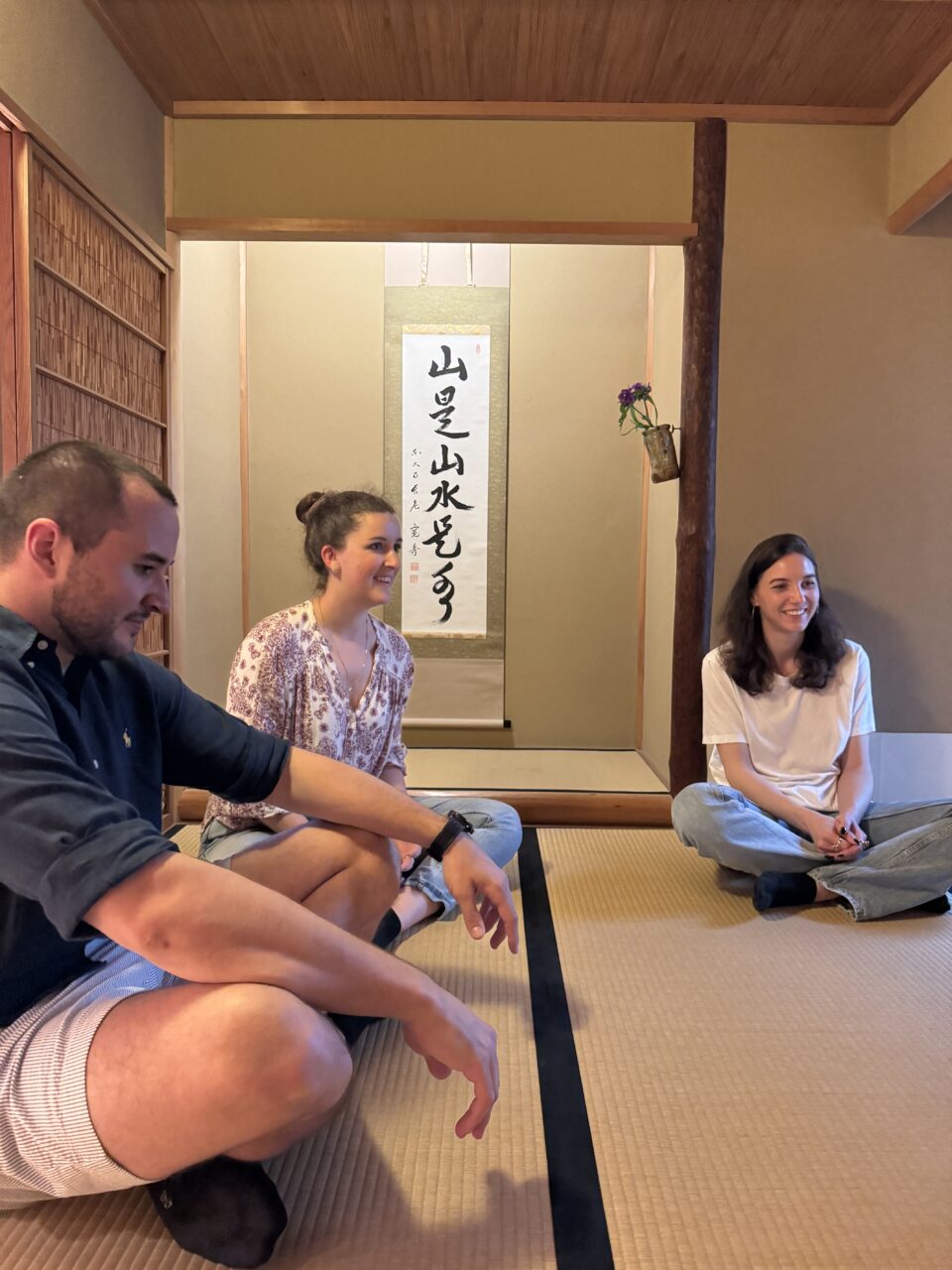

I received a happy message from one of my client.
Thank you!
These guests were very interested in Shinto and wanted to pay an official visit to the shrine.
So I took them to Nitta Shrine in the south of Tokyo.
This shrine was founded in the 14th century and is still held in high esteem by the locals.
The priest is an official of the Shinto shrine authority and used to be a university professor.
He answered my customers’ questions with precision.
After the prayer, customers received souvenirs such as o-fuda (wooden prayer cards that resemble icons).
The nice photos were taken by the customer.
・・・・・
Letzte Woche sind wir wieder in die Schweiz zurückgekehrt. Etwas mehr als sieben Wochen durften wir Ihr wunderschönes Land entdecken.
Meiner Frau und mir ist es ein Anliegen, Ihnen noch einmal ganz herzlich zu danken für Ihre Hilfe bei der Übersetzung des Fahrzeugausweises und der Organisation des Besuches dieses wunderschönen Schreines und der sehr interessanten Begegnung mit dem Priester. Wir denken gerne und oft daran zurück und die überreichten Geschenke schmücken jetzt unsere Wohnung.

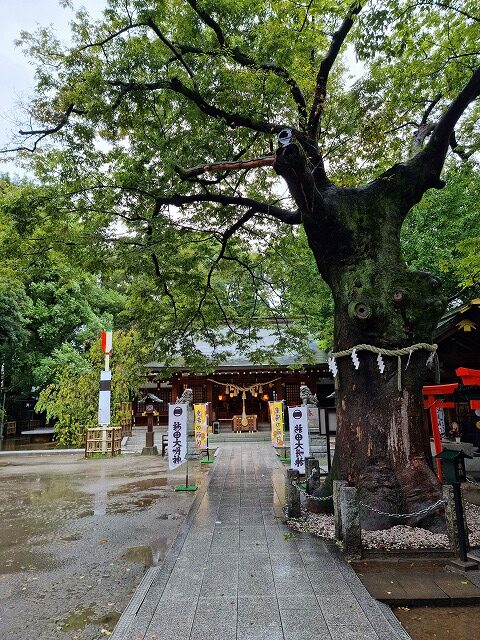

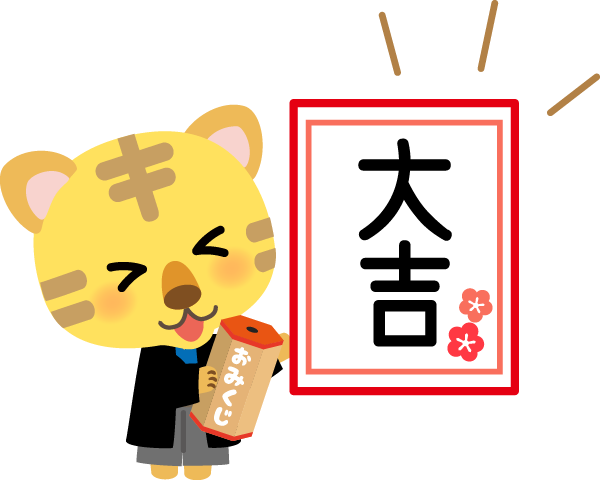
There are many temples and shrines in Japan.
Many Japanese people visit them, especially at New Year, to wish themselves good luck.
In tourist areas, many worshippers also visit them outside the New Year.
Many try OMIKUJI after they finish the prayer.
Omikuji is one of the traditional forms of fortune telling in Japan. It is usually practiced at shrines and temples. Omikuji is a way to learn about one’s destiny and a prediction of the future, and many people look forward to it.
To draw an omikuji, you must first go to a place in a shrine or temple where omikuji is available. There, you may have to pay a certain fee or put money in a box. Usually, it costs between 100 and 300 yen to draw an omikuji. Then you get a small paper strip from the box or container provided.
The paper strip, also called an omikuji, is usually printed with characters or information. Each character represents a particular fortune or message. “Daikichi,” for example, means “the greatest luck” and represents good fortune and success. “Kyo,” on the other hand, represents bad luck or trouble and urges caution.
After you draw an omikuji, you can read its contents to learn its meaning. Omikuji may contain advice or prophecies related to good luck, health, love, and work.
Even if you are not satisfied with the result of your omikuji, there is no need to worry. The omikuji is just an indication, and you can change your future through your actions and efforts. If you receive an omikuji that indicates bad luck, you can tie it to a string connected to the omikuji stand at the shrine or temple. The shrine priests or temple monks will take care of it appropriately so that you will be protected from bad luck. However, remember to heed the message and be careful in your actions.
Here are some words frequently found in Omikuji:
大吉 Daikichi (Great Blessing): The best of luck.
吉 Kichi (Good Luck): A favorable good fortune.
中吉 Chukichi (Medium luck): Your luck may improve depending on your efforts.
小吉 Shokichi (Little luck): Neither good nor bad luck.
末吉 Suekichi (Future luck): Look to the future.
凶 Kyo (Misfortune): There may be trouble or misfortune. Be careful.
I studied Shinto at a university specializing in that field, and worked as a miko (shrine maiden) at a large shrine in Nagoya. During that time, I also sold omikuji, and they were very popular. The faces of the visitors were always cheerful, and they seemed very happy.
Although omikuji is widely accepted as part of Japanese culture and beliefs, it is also a pleasure for foreigners. If you have the opportunity to visit Japan, I highly recommend the Omikuji experience. You will be able to enjoy the anticipation of your happiness and future. Usually, the Omikuji is only in Japanese, so it is helpful to have a guide or someone who speaks Japanese to explain it to you. Recently, some temples, such as Senso-ji Temple in Asakusa, have started offering omikuji in English.
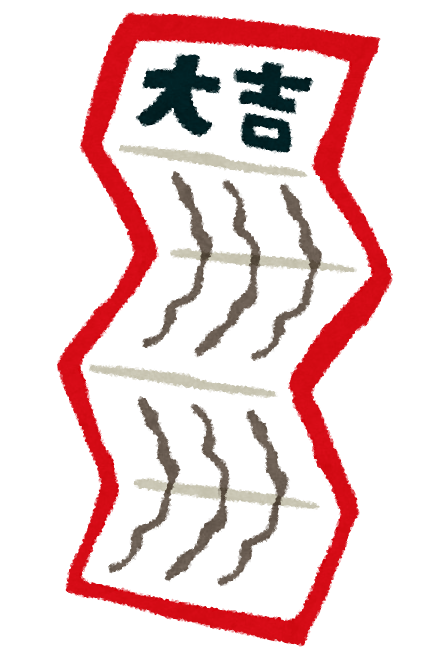
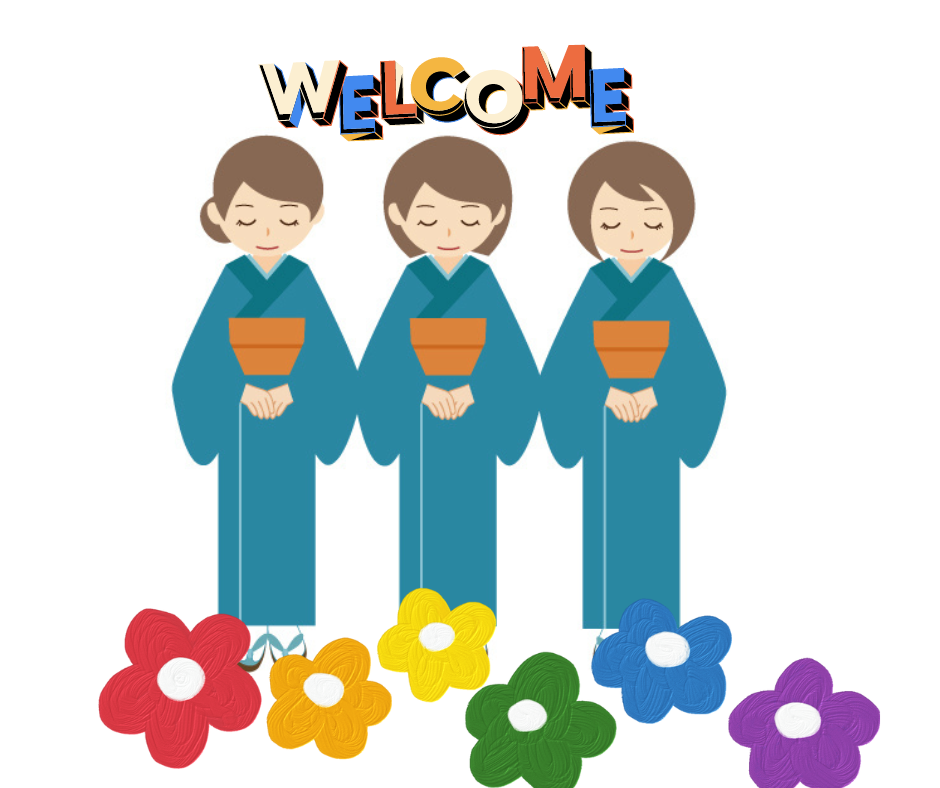
There is a history book called ‘Nihon Shoki’ (Chronicle of Japan) that was written about 1,300 years ago. In it, a gay couple named ‘Shinonohafuri’ and ‘Amanohafuri’ is described. This is probably the oldest surviving record of LGBT people in Japan. Additionally, homosexuality is also mentioned in famous classical literature such as ‘The Tale of Genji.’ Historically, Japanese attitudes toward homosexuality may have been very tolerant.
In recent times, a singer and actor named Akihiro Miwa is very famous. While biologically male, he has always presented himself as a beautiful woman. His relationship with the writer Yukio Mishima was also well-known (Yukio Mishima was married and had children). Mishima once said to Akihiro Miwa, ‘Your shortcoming is that you are not in love with me.’ The Japanese consider this episode a fine piece of literature.
Akihiro Miwa ↓
Incidentally, Japanese people usually travel as married couples or families, but it is also common for male-to-male and female-to-female friends to travel together and stay in the same room. For hotel and ryokan employees, it does not matter whether their customers are couples or simple friends. It is a misconception that a hotel that is not LGBT-friendly will refuse to accommodate guests. First of all, there is a ‘Ryokan Business Law’ in Japan that makes it very difficult for hotels to refuse accommodation.
Hotels and ryokans are prohibited from refusing accommodation except in the following cases: (Ryokan Business Law, Article 5).
When it is clear that the person who intends to stay is suffering from a contagious disease.
When it is apparent that the person intending to stay is likely to commit an illegal act or an act that disturbs public morals.
When there is no room in the accommodation.
You may be troubled by the term ‘public morals’ in item 2. Specifically, for example, you can interpret that a person who intends to stay at the accommodation is involved in one of the following:
If a person intending to stay overnight in an accommodation is a member of a crime syndicate, etc.
When engaging in behavior that causes significant inconvenience to other guests.
When violent demands or requests for an unreasonable burden are made regarding accommodation.
Are you a member of a crime syndicate? Are you a danger to others? If not, the hotel cannot refuse your accommodation due to the law.
In Japan, it is nice to relax in an onsen (hot spring). We hope you will enjoy it. In onsen ryokan, you can bathe in separate large baths for men and women. Please note that people with tattoos may be denied bathing.
Click here for an article about tattoos ↓
Why are tattoos frowned upon in Japan?
Female and male visitors to major public baths use the baths according to their gender at birth. If you experience any inconvenience or are unable to use the main baths due to your tattoo, do not be discouraged. Some ryokans have private baths or rooms with small outdoor baths. These private spaces allow you to relax without any worries.
My small travel agency can arrange such ryokans for you, and if you have any concerns, we can discuss them with you. I hope you enjoy your wonderful trip in Japan.

Since Japan is often mistakenly seen as reluctant to recycle, I would like to discuss this.
Currently, Japanese supermarkets and convenience stores charge for plastic bags. Some stores still offer them for free, but there have been debates on this issue.
How much resources can we save by reducing the use of plastic bags? Of the petroleum consumed in Japan, only 2.7% is used to produce plastics, and of that, plastic bags in turn account for 2.2%. In other words, plastic bags consume only 0.05% of petroleum. Even if this percentage were reduced to zero, it would have little impact on resource savings. This is because the material for plastic bags, polyethylene, is derived from naphtha, which is a byproduct of petroleum refining and was previously treated as waste. Even if the use of plastic bags is discontinued, it would have little effect on petroleum consumption.
In addition, waste incinerators in Japan are capable of withstanding high temperatures of over 800°C. Waste heat from the incinerators is used to generate electricity and heat water, and nearly 90% of the waste heat is recovered as energy.
The recycling rate for PET bottles in Japan was 86.0% in 2021. In comparison, the recycling rate for PET bottles in Europe in 2019 was about 57.5% (although this is already somewhat outdated data). PET bottles for beverages have plastic labels that can be easily peeled off. The Japanese remove the labels and caps and forward the PET bottles for recycling.
In Japan, candy is often sold in multiple packages. This is also due to the climate in Japan. Due to the high humidity, extra packaging is required in some cases to protect the products from moisture. Therefore, it is not possible to eliminate packaging completely.
People in Japan make it a point to look at environmental issues on a scientific basis, rather than emotionally, and find better solutions.
*The work of Japanese economist Nobuo Ikeda was used as a reference.

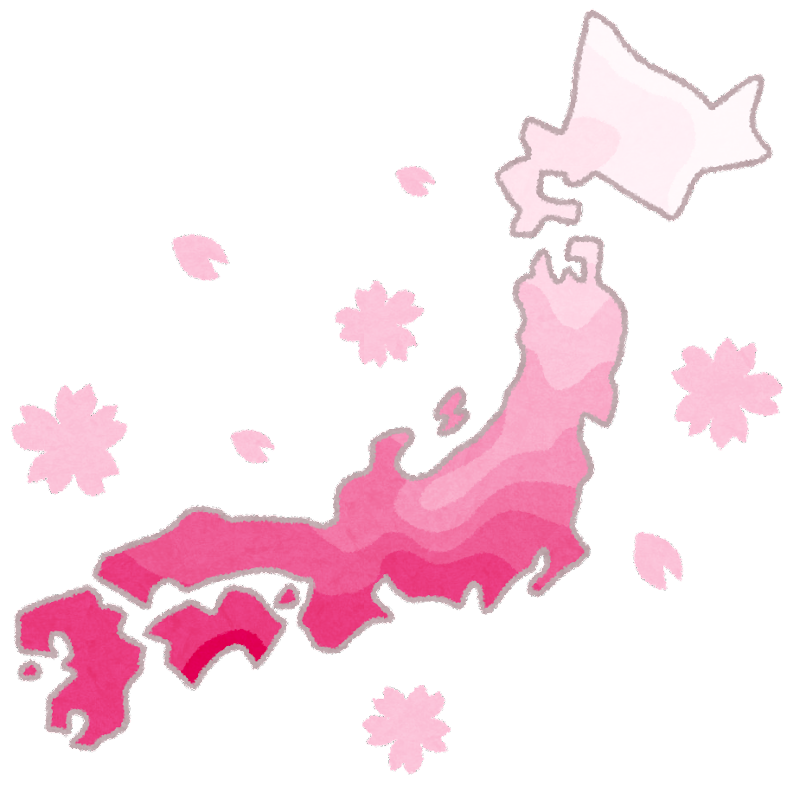
I would like to give you basic information about Japan that is often asked by our customers.
By May 1, 2023, the population of Japan is about 124.5 million people.
The area of Japan is about 377,972 square kilometers. Japan is an elongated country with a north-south extension of about 3,000 kilometers and an east-west extension of about 400 kilometers.
Germany is said to have a population of about 83.4 million people and an area of about 357,022 square kilometers, while Switzerland has a population of about 8.8 million people and an area of about 41,290 square kilometers. Austria has a population of about 8.91 million people and an area of about 83,879 square kilometers.
Don’t you think Japan is a pretty big country? Japanese people themselves often think that Japan is a small country, but in fact it is not so small.
Besides, many people have the image of a metropolis like Tokyo in their minds, so they tend to think that Japan does not have much nature.
The forest area of Japan is about 25,125,000 hectares, which is about 68% of the land area of Japan.
Japan has a long coastline due to its island location. The length of this is about 35,000 kilometers.
This is about 87.3% of the distance one would travel from Berlin to orbit the earth.
By the way, if you are considering a trip to Hokkaido, you should know that the area of Hokkaido is about 78,000 square kilometers.
The Czech Republic has an area of about 78,866 square kilometers. So Hokkaido is slightly smaller than the Czech Republic.
I recommend you to consider the size of Hokkaido before planning your trip.
There are even Japanese travelers who do not know the size of Hokkaido and travel there without awareness, which often causes astonishment among people in Hokkaido.

Japanese people say “Itadakimasu” by clenching their hands before eating. This is part of etiquette and is taught from childhood.
“Itadakimasu” means something like “I am about to receive my meal,” but has Buddhist validity.
Since ancient times, the Japanese have valued the life of plants and animals as if they were their equals.
Therefore, before each meal, people join their hands to the life of the rice, wheat, vegetables, fish, meat, etc. that they will eat.
It means, “From now on, I will live through them”.
We thanks to the life of the animals and other things.
This is the Japanese way of thinking.
That’s why children are scolded severely if they leave food or don’t like their favorite foods anymore. Because it is an action that wastes the life of someone or something.
The Japanese love to eat.
In Japan, there are many restaurants with Michelin stars. However, you don’t have to spend a lot of money to eat well.
Perhaps it is because people have always been told to eat everything with enjoyment and gratitude.
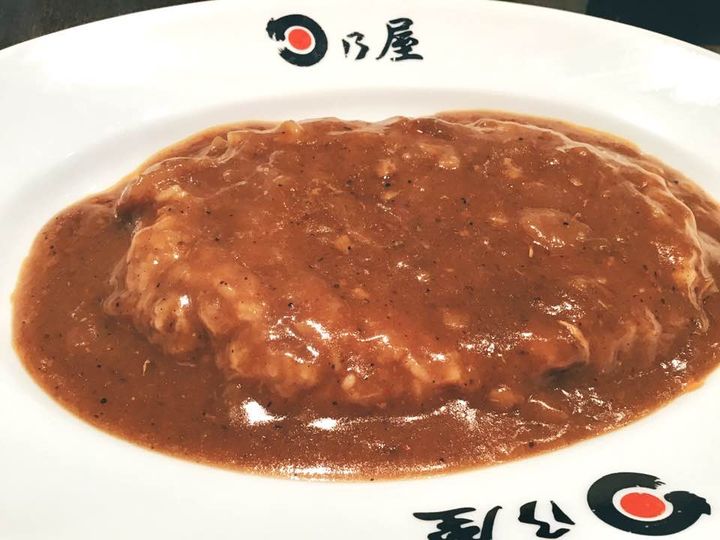
Curry is an Indian dish, but it is also commonly eaten in Japan.
Japanese curry has undergone its own development and is different from Indian curry.
In the 19th century, shortly after Japan opened to the outside world, curry was introduced to Japan.
Curry was introduced to Japan by the British. Since India was a British colony, curry was also available in the United Kingdom.
However, it also needs a mention of the Indians who contributed to the development of curry in Japan.
In Shinjuku, Tokyo, there is a historic restaurant called Nakamuraya.
A supporter of the Indian independence movement named Ras Bihari Bose had defected to Japan.
This was in the year 1915.
While Nakamuraya gave him shelter, Bose taught him how to make curry.
Today, Nakamuraya still serves delicious curry.
Curry was also put on the menu of the Japanese Navy.
The Royal Navy had curry on their menu, and it seems they imitated it.
Now the Maritime Self-Defense Force has adopted this tradition.
Every Friday, the officers of the Maritime Self Defense Force eat curry.
When you’re serving on a submarine, you lose your sense of the days of the week.
That’s why they always eat curry on Fridays to get a sense of the days of the week again.
Maritime Self-Defense Force curry can be eaten in Yokosuka and Kure.
There are also packaged ready-to-eat meals available.
There is a small JSDF store in Ichigaya where you can buy them.
When it comes to Japanese food, sushi and ramen are very famous.
However, you should also try curry.
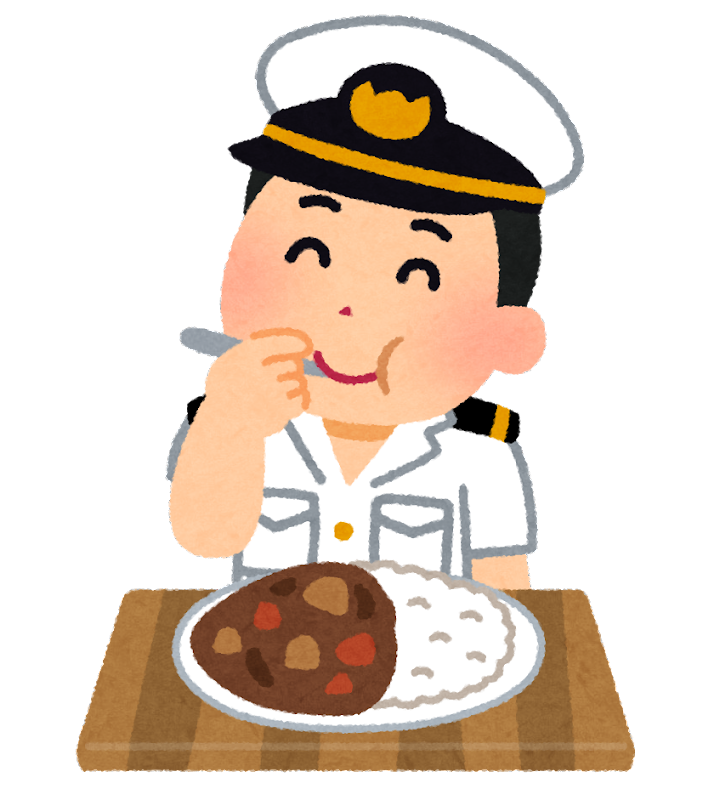

It was about 10 years ago, I think.
I took was on a flight from Vienna to Narita (Tokyo).
There was a foreign woman sitting next to me and we were talking in English.
She said she was an engineer living in Israel who was going to be in Japan for the first time on a business trip.
There were also Japanese tourists on the plane. Presumably they had been sightseeing in Vienna.
The Israeli woman then noticed that one of the tourists was wearing a mask.
Masks were not common in Europe or Israel at that time, which obviously struck her as odd.
I explained to her that the man with the mask probably had a cold.
He wears a mask in order not to pass on his cold to others.
She was very surprised.
He is not wearing the mask for himself, but for others!
I was surprised that she was surprised, because for us it was a normal thing.
And the Japanese have the same intention with the masks during the Corona pandemic.
We think that we might be infected with Corona and if we pass it on to others, it would be our fault.
The Japanese saw a supercomputer (Fugaku) generated simulation of droplet transmission,
examining the scientific risk of corona transmission when wearing or not wearing a mask.
Then, in another experiment, the type of mask was tested.
In Japan, masks made of nonwoven fabric are recommended.
N95 masks should be kept on hand for physicians, and the general public should wear nonwoven masks.
And as it is typical for Japanese people, they like cute things, so colorful masks and masks with beautiful patterns are sold.
It is a good souvenir from Japan.

Japanese-style ryokan are charming and nice, but there are manners to be aware of.
Even Japanese people (especially young people) may not know the manners if they do not have a chance to stay at a ryokan.
If you have any questions, don’t be shy to ask the ryokan staff.
Let’s start with an explanation of tatami rooms.
It is natural to take off your shoes and slippers before entering the room, but please do not put your bag with wheels on the tatami.
Tatami will be damaged and replacing tatami will cost a lot of money.
It is best to place them on wooden flooring or in the entrance space.
The space slightly higher than the tatami where a vase or a hanging scroll is hung is called “Tokonoma” (alcove) and is a shelf for decoration.
It is bad manners to put your bag here.
Most of the time, flowers are arranged and the room is clean, so it is best to look at them and enjoy them.
A tea set is provided on the table.
Put the tea leaves in a Kyusu (teapot), pour hot water, wait a little, and pour it into Yunomi (cup).
If there is a container with a hole in it, it is used to store used tea leaves.
There are usually sweets available, so don’t hesitate to eat them.
Nakai-san (ryokan room attendants) sometimes come to your room, so it would be embarrassing if you leave your belongings in a mess.
It is a good idea to leave valuables in the safe.
Futons are prepared by Nakai-san when guests are not in their rooms for bath or meals.
Sleeping on futons on tatami mats is a unique feature of Japanese-style rooms.
You do not need to put the futon away after you have finished using it.
At ryokans, all guests wear yukata (light cotton kimono).
A yukata, obi, and, depending on the season, a tanzen (jacket) are provided in the room.
The yukata is like a uniform in a ryokan, and is worn in the room, when sleeping, and even when going to the bath.
Yukata is worn in the room, when sleeping, and even when going to the bath.
Most ryokans are fine to wear a yukata for meals as well, but in rare cases, it is not allowed in high-class ryokans.
Yukatas are the property of the ryokan, and should be folded near the futon before checking out.
Amenities include hand towels with the ryokan’s name on them and a toothbrush set.
Towels with the ryokan’s name and toothbrushes can be taken home with you.
However, large items such as bath towels are ryokan equipment and should be returned after use.
Tipping is also not a common practice these days, but my grandmother used to give a 1,000-yen bill wrapped in a piece of paper to the Nakai-san.
Perhaps because I was small, she thought it would cause trouble for the ryokan.
In Japan, there is also a culture of “Kokorozuke” (Tipping).
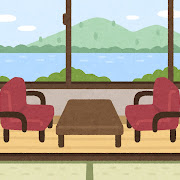
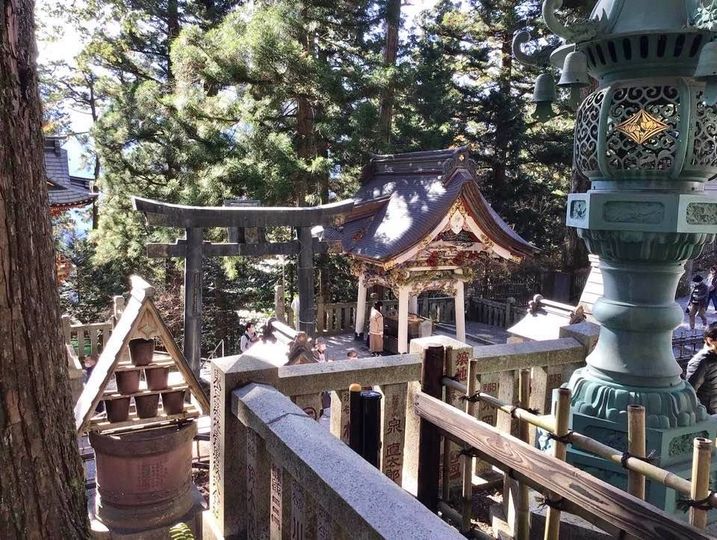
There are many temples and shrines in Japan. Do you know what the differences are?
Simply put, they differ in religion.
Temples are Buddhist institutions, while shrines are Shinto institutions.
There are about 77,000 Buddhist religious organizations and 86,000 Shinto religious organizations.
These figures do not include small, locally managed organizations.
In Japan, Shinto is older than Buddhism.
It is what is called animism, in which the sun, moon, fire, water, and other common objects are the objects of worship.
Prayers for a good harvest are especially important.
At shrines, there are priests wearing white kimonos and blue, purple, or white hakama (old Japanese pants), and miko (female priests’ assistants) wearing white kimonos and red hakama.
Incidentally, the highest-ranking priest is the emperor.
The torii gate at the entrance of a shrine is another sign that it is a shrine.
The method of worship is to bow twice, clap twice, and bow once before the God.
Most shrines use this method of worship, although the method differs in Izumo and other areas.
It is said that Buddhism was introduced to Japan around the 6th century.
At that time, Japan already had Shintoism, so Buddhism was a new religion that came from abroad.
Buddhism is based on the belief in Buddha.
In temples, there are priests wearing black kimonos. Depending on the sect, they may be skinheads.
People often think of Buddhism as “Zen,” but Zen Buddhism is one type of Buddhism.
Buddhism is something much larger.
The manner of worship is to bow in front of the Buddha statue, then join hands, and bow once again.
No Kashiwa-de (clapping hands) are used.
By the way, some Japanese often say that the Japanese are not religious, but there is an interesting statistic.
According to the Japanese government’s 2020 statistics, there are 87,924,087 Shintoists and 83,971,139 Buddhist believers.
The total for both is 171,895,226.
And the population of Japan is about 125,710,000.
The total number of Shinto and Buddhist believers is greater than the population.
Professor Tsunetada Mayumi, from whom I learned Shinto, said, “Shinto is not a religion, but a tradition”.
Shinto has been in Japan for so long that it has become so ingrained in the way of thinking and living that the Japanese themselves are unaware of it.
And it is very natural for Japanese people to believe in Buddhism and Shinto at the same time.

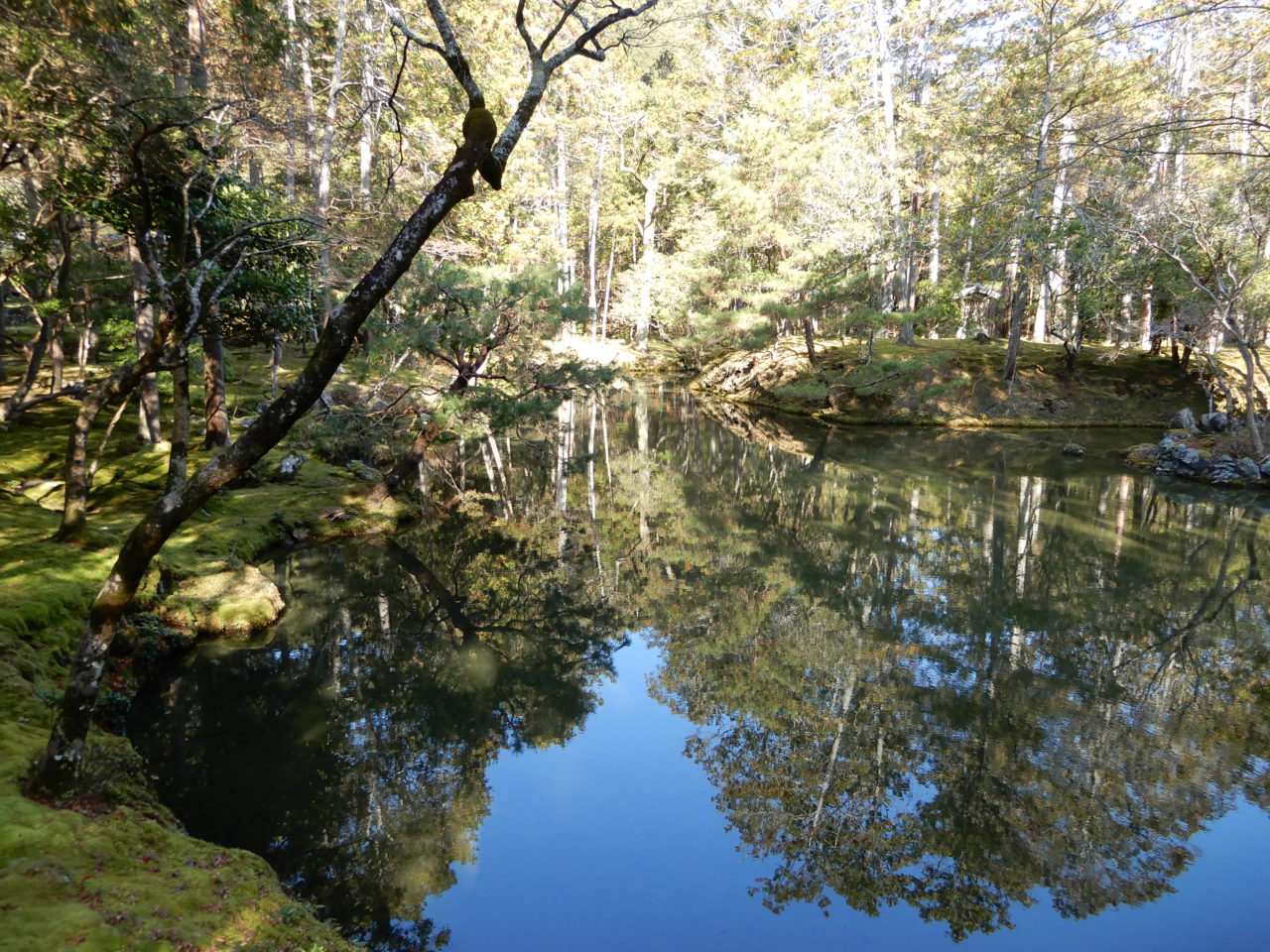
Kyoto has 17 World Heritage cultural properties, one of which is Saihoji.
The nickname for this temple is “KOKEDERA(Moss Temple)”.
This is because there is a very beautiful moss-covered Japanese garden here.
Visitors come to this temple on the outskirts of Kyoto for its beautiful garden.
KOKEDERA is a Zen temple, and before seeing the garden, visitors first do sutra copying and pray to the Buddha.
And the gardens are beautifully maintained, and people enjoy strolling through them.
Only people with reservations are allowed to visit this beautiful temple.
Making a reservation is difficult, and during the tourist season, it becomes even more difficult.
In the past, this temple could be visited at any time, just like any other temple.
However, too many tourists caused damage to the beautiful garden.
Furthermore, noise is not appropriate for this quiet temple.
And now only those who have made reservations can come here.
However, there are a few days a year when child visits are possible.
In this way, KOKEDERA maintains its elegance.
My small travel agency can help you with reservations and explain the etiquette.
Reservations are difficult to make, but can be challenging.
Concierge for your travel


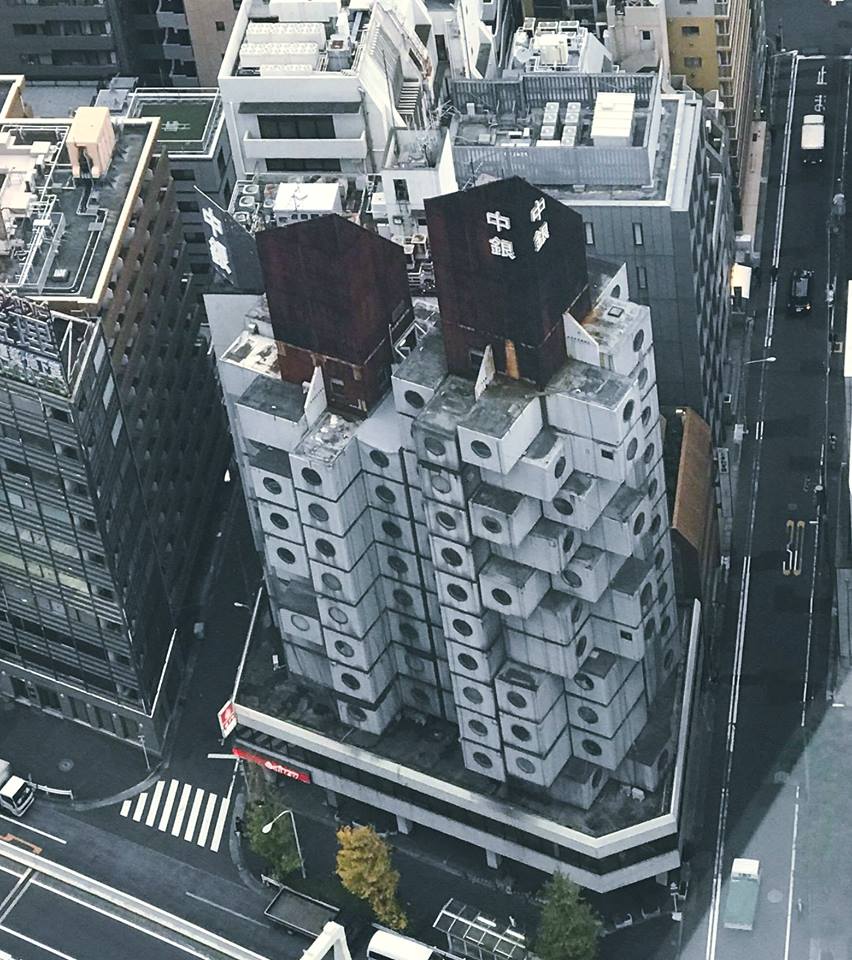
The unique work of the famous architect Kisho Kurokawa, the Nakagin Capsule Tower, still stands in Ginza 8-chome, Tokyo, and can be seen from the Tokyo Metropolitan Highway.
It was decided to demolish the building next year because it is very old and no major repairs have been made since it was built in 1972.
The Nakagin Capsule Tower will only be visible for a short time.
In a capsule of about 10 square meters, the most modern bathrooms, shelves and other necessary items were built into the capsule like a puzzle. There are 140 of them attached to the tower.
The round window is a feature of the building, which was inspired by a tea room.
Each capsule was supposed to be removable, so that when it became obsolete, a new capsule could be inserted or the entire capsule could be transported.
In fact, however, no capsules were removed.
Each capsule has its own owner and there is a management company. There were differing opinions because of the high cost required for repairs.
They had sought sponsors to maintain the site, but were unable to do so due to the Corona pandemic and had to make the difficult decision to sell the property.
The exact schedule for demolition next year has not yet been determined.
So there is still a chance to visit the Nakagin Capsule Tower.
My small travel agency can arrange an English speaking tour of the Nakagin Capsule Tower.
We will be able to offer the tour in October 2021, but we are not sure if we can do it in November, so we need confirmation.
If anyone is interested in joining the tour, please contact us as soon as possible.
Nakagin Capsule Tower(Regular Tour every Wednesday)
Nakagin Capsule Tower(Private tour)
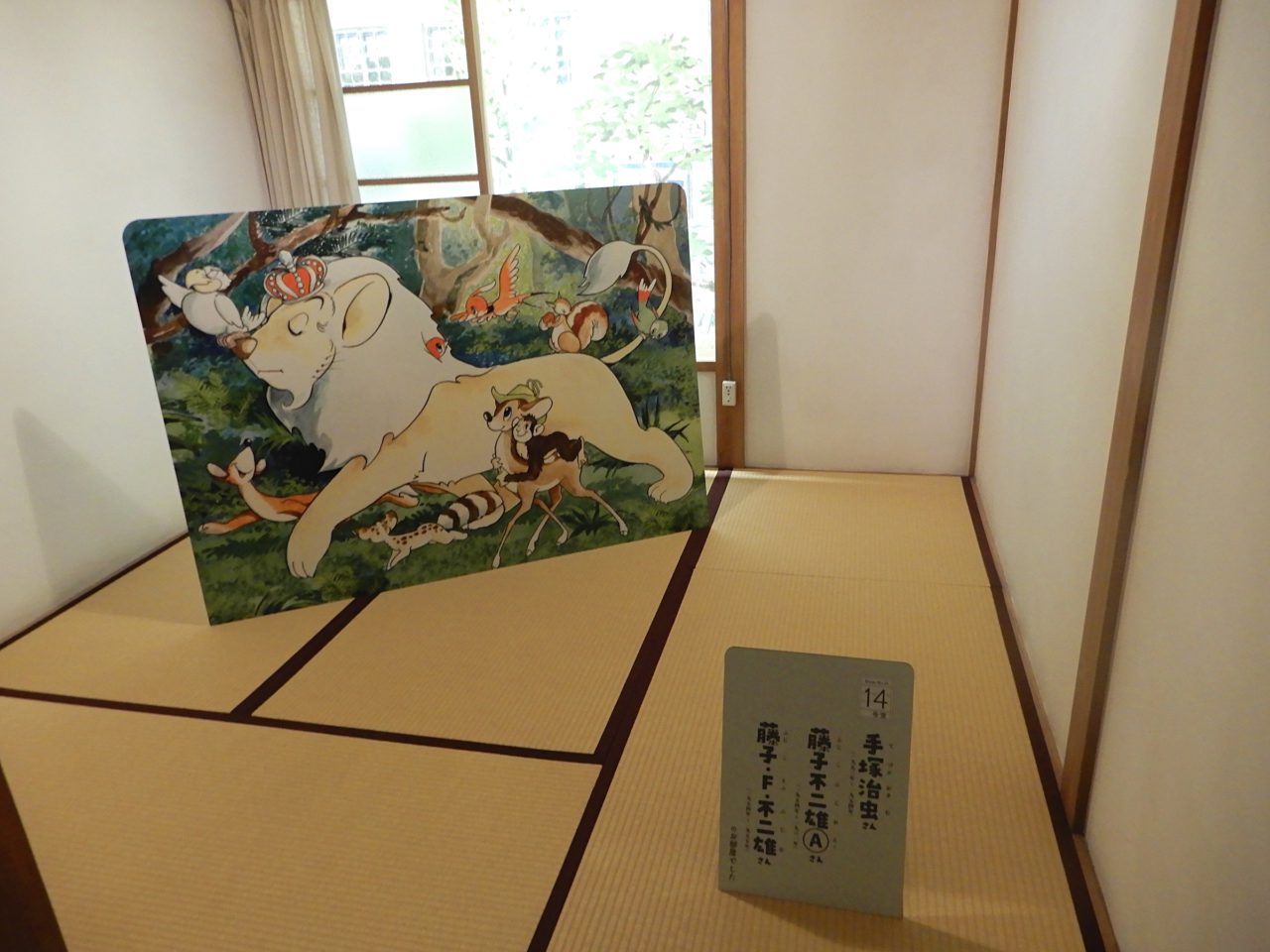
In Toshima-ku, Tokyo, there used to be a famous residence where famous manga artists such as Osamu Tezuka, Fujiko Fujio Ⓐ, Fujiko F. Fujio, Shotaro Ishinomori and Fujio Akatsuka lived. Unfortunately, the Tokiwa-so was demolished in December 1982 due to age. It was a two-story wooden building constructed in 1952, shortly after World War II.
Today, a small monument stands on the site.
After that, local citizens who loved the Tokiwa-so began to talk about the possibility of restoring it. Many donations were collected, and on July 7, 2020, the restored site was opened as the Tokiwaso Manga Museum of Toshima City. It was originally scheduled to open in March of that year, but the opening was postponed due to the Corona pandemic.
The reconstruction of the Tokiwaso is extremely elaborate, and every detail is reproduced exactly as it was then. It is truly “otaku.” (Here: faithful to the original) The community restrooms and kitchens give the illusion that the young manga masters will come in at any moment. Famous works were created in each room, which served as a place for manga artists to work and live. Even the scenery you see from the windows has been designed to make you feel like you’ve stepped back in time.
By the way, special exhibitions are often held on the second floor of the Tokiwaso Manga Museum. You should not miss these, as there are some valuable manuscripts on display. Until September 5, 2021, the exhibition “Tokiwaso and Tezuka Osamu: The Time of Kimba the White Lion” will be on display. You can see Tezuka Osamu’s precious handwritten manuscripts up close.
Osamu Tezuka, as you know, is a manga master known for many works such as “Astro Boy”, “Kimba the White Lion”, “Black Jack” and “Phoenix”. I believe that almost all manga artists and animators working in Japan respect Tezuka Osamu.
Currently, the Tokiwaso Manga Museum has a system in which reservations have priority.
Reservations can be made through the website.
Toshima City Tokiwaso Manga Museum
https://tokiwasomm.jp/
●In my online Japanese course, you can talk in Japanese about a topic of your choice. Depending on your needs, I can also supplement this with English or German.
https://kaguyaclass.com/


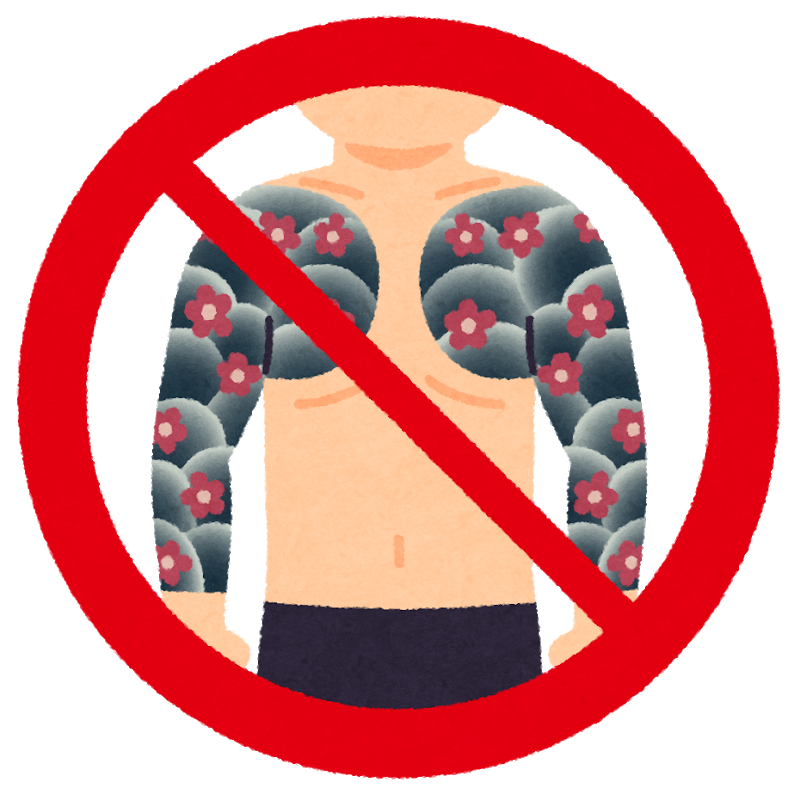
There are many hot springs in Japan and they are very popular with tourists.
But most of the time people with tattoos are not allowed to bathe in the big baths.
Why is that?
Japan has a long history of tattooing.
In ancient times, tattoos were known to be used as amulets in Japan.
And in the Edo period (1603-1868), there were people who had tattoos as fashion statements.
Even in old ukiyo-e paintings, there are pictures of men with tattoos, which are very beautiful.
But tattoos were also used to denote sinners. For this reason, some people rejected tattoos.
Japan used to be a closed country, but it opened up during the Meiji period.
The Japanese government of the Meiji period considered tattoos an international embarrassment and banned them.
But there were also people who got prohibited tattoos.
For example, the Yakuza (the Japanese mafia).
Tattoos thus became the symbol of the Yakuza.
For the operators of a hot spring it is impossible to reject yakuza directly.
For this reason, they decided to ban tattoos.
This is to protect the guests.
Meanwhile, some hot spring facilities welcome tattooed guests.
There are also facilities where small tattoos are not a problem as long as you cover them with a sticker.
If you have a tattoo, you should check beforehand.
My small travel agency can arrange accommodations that meet your needs.
https://kaguyareisebuero.com/contact/
●In my online Japanese course, you can talk in Japanese about a topic of your choice. Depending on your needs, I can also supplement this with English or German.
https://kaguyaclass.com/
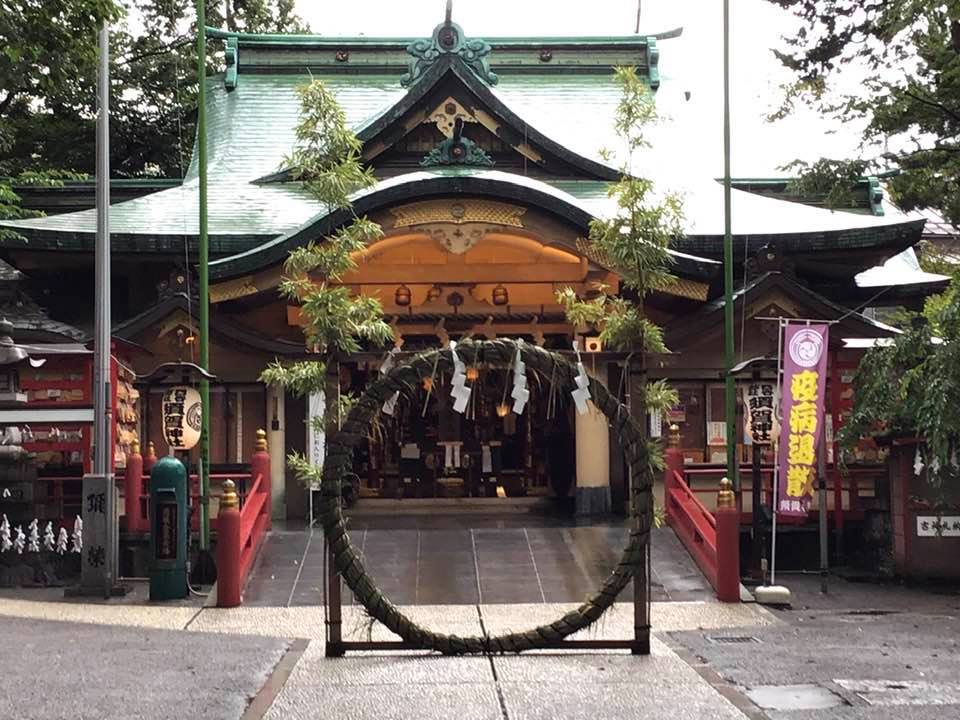
Every year at the end of June, a “CHINOWA” is placed at the shrine.
It is a ring made of plants and is large enough for one person to pass through.
The plant is CHIGAYA. It is a tough grass in the Japanese rice family.
The worshippers pass through the CHINOWA once to the left, once to the right, and once again to the left, before proceeding to the shrine.
In this way, the impurities of the past six months are purified.
On June 30th, there is a ritual called “Nagoshi no Oharae” (summer purification ceremony), where the priests offer prayers.
They pray for everyone’s health.

- Prev
- Topics
- Next











